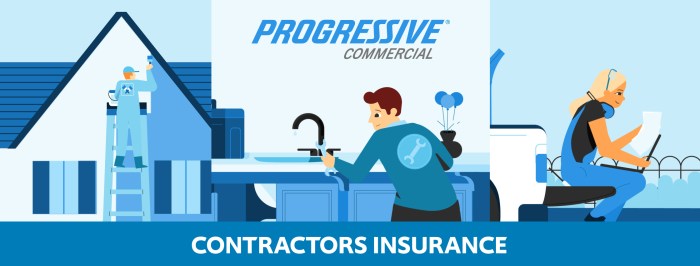Exploring the world of metal siding for houses unveils a plethora of options and considerations that can transform the look and durability of your home. From different types of metal siding to cost considerations and design options, this guide will walk you through everything you need to know before taking on a metal siding project.
Types of Metal Siding
Metal siding is a popular choice for houses due to its durability and low maintenance requirements. There are several types of metal siding options available, with steel, aluminum, and zinc being the most common choices.
Steel Metal Siding
Steel siding is known for its strength and durability, making it a popular choice for homeowners looking for long-lasting siding. It is resistant to harsh weather conditions, such as strong winds and hail, making it a suitable option for various climates.
Steel siding is also relatively low maintenance, requiring occasional cleaning to maintain its appearance.
Aluminum Metal Siding
Aluminum siding is lightweight and easy to install, making it a popular choice for homeowners looking for a quick and efficient siding option. It is resistant to rust and corrosion, making it suitable for areas with high humidity or coastal regions.
Aluminum siding is also available in a wide range of colors and finishes, allowing homeowners to customize their exterior look.
Zinc Metal Siding
Zinc siding is known for its unique appearance and natural weathering process, which creates a protective layer over time. This natural patina not only adds character to the siding but also helps protect it from the elements. Zinc siding is also environmentally friendly and recyclable, making it a sustainable choice for eco-conscious homeowners.Overall, each type of metal siding offers unique benefits in terms of durability, maintenance, and aesthetic appeal.
Homeowners should consider their specific needs and preferences when choosing the right metal siding option for their house.
Installation Process
Metal siding can be a durable and aesthetically pleasing option for your house. The installation process involves several key steps to ensure a proper and long-lasting finish.Proper installation of metal siding requires attention to detail and the use of the right tools and materials.
Here are the general steps involved in installing metal siding on a house:
Tools and Materials Required for DIY Metal Siding Installation
- Metal siding panels
- Fasteners
- Level
- Tape measure
- Tin snips
- Hammer
- Drill
- Caulk gun
Proper tools are essential for a successful metal siding installation.
Importance of Proper Insulation and Moisture Barrier
Installing a proper insulation and moisture barrier is crucial when putting up metal siding on a house. This helps in regulating temperature, preventing condensation, and protecting the structure from moisture-related damage. It also enhances energy efficiency and overall comfort within the house.
- Insulation helps in reducing heat loss and maintaining a comfortable indoor environment.
- A moisture barrier prevents water infiltration and protects the house from potential water damage.
- Properly installed insulation and moisture barrier can increase the lifespan of the metal siding and improve the overall performance of the house.
Cost Considerations
Metal siding for houses can vary in cost depending on several factors. The initial cost of purchasing the materials, labor costs for installation, and any additional customization or finishes can all impact the overall price. However, it's important to consider the long-term cost savings that metal siding can offer compared to other siding materials.
Long-Term Cost Savings
Metal siding is known for its durability and low maintenance requirements. Unlike wood or vinyl siding, metal siding is resistant to rot, insect damage, and fading. This means that homeowners can save money on repairs and replacements over time. Additionally, metal siding is energy-efficient and can help reduce heating and cooling costs, leading to long-term savings on energy bills.
Effective Budgeting Tips
- Get multiple quotes from different contractors to compare prices and ensure you're getting a fair estimate.
- Consider the size of your home and the amount of siding needed when budgeting for materials.
- Factor in any additional costs for insulation, trim work, or special finishes that may be required.
- Plan for unexpected expenses by setting aside a contingency fund in case of unforeseen issues during installation.
- Look for any available rebates or incentives for energy-efficient upgrades, which can help offset the initial cost of metal siding.
Design Options and Customization
Metal siding offers a wide range of design options and customization opportunities to enhance the appearance of a house and complement various architectural styles.Metal siding can be customized to suit different architectural styles, from modern and contemporary to traditional and rustic.
The versatility of metal allows for unique design elements to be incorporated, such as vertical or horizontal panels, varying seam profiles, and different textures.
Color Options
Metal siding comes in a variety of colors to match the aesthetic preferences of homeowners. From classic neutrals like white, gray, and black to bold shades like red, blue, and green, there are endless possibilities for personalizing the look of a house with metal siding.
Textures and Finishes
In addition to color choices, metal siding offers different textures and finishes to add depth and visual interest to the exterior of a house. Options include smooth finishes for a sleek, modern look, as well as textured finishes that mimic the appearance of wood or stucco for a more traditional feel.
Customization Ideas
To further customize metal siding and enhance curb appeal, homeowners can consider mixing and matching colors, combining different finishes for contrast, or incorporating unique design details like trim accents or decorative panels. These customization options allow for a truly personalized and eye-catching exterior design.
Maintenance and Care

Metal siding, while durable and long-lasting, requires proper maintenance to ensure it stays in top condition for years to come. Regular care and attention can help prevent common issues such as rust, dents, scratches, and fading.
Cleaning and Maintenance
- Regularly clean the metal siding with a mild detergent and water to remove dirt, dust, and grime.
- Avoid using harsh chemicals or abrasive materials that can damage the finish of the siding.
- Inspect the siding for any signs of rust or corrosion, and address them promptly to prevent further damage.
- Trim any overhanging branches or vegetation that may come in contact with the siding and cause scratches or other damage.
Addressing Rust and Dents
- If you notice any rust spots on the metal siding, gently sand the area and apply a rust-resistant primer and paint to prevent further corrosion.
- For minor dents, use a rubber mallet or block of wood to carefully hammer out the dented area from the inside, being careful not to damage the surrounding siding.
- For more severe dents or damage, consider contacting a professional to assess and repair the siding.
Protecting from Scratches and Fading
- Avoid using sharp or abrasive objects near the metal siding to prevent scratches.
- Consider applying a protective coating or sealant to the siding to help prevent fading from exposure to sunlight and harsh weather conditions.
- Regularly inspect the siding for any signs of damage or wear, and address them promptly to prevent further issues.
Closure
In conclusion, metal siding offers a durable and versatile solution for homeowners looking to enhance their house's appearance and longevity. With the right knowledge and tools in hand, you can embark on a metal siding installation project that not only adds value to your home but also elevates its curb appeal for years to come.
FAQ Resource
What are the main types of metal siding for houses?
Steel, aluminum, and zinc are the most common types of metal siding used for houses, each with its own advantages in terms of durability and maintenance.
Is metal siding more expensive than other siding materials?
While metal siding may have a higher upfront cost, it often proves to be more cost-effective in the long run due to its durability and low maintenance requirements.
How can I protect metal siding from common issues like rust and dents?
Regular cleaning and inspection can help prevent rust and dents on metal siding. Applying a protective coating can also prolong its lifespan.
Are there options to customize metal siding for a unique look?
Yes, metal siding comes in various colors, textures, and finishes, allowing homeowners to customize their exterior to suit their style preferences.









